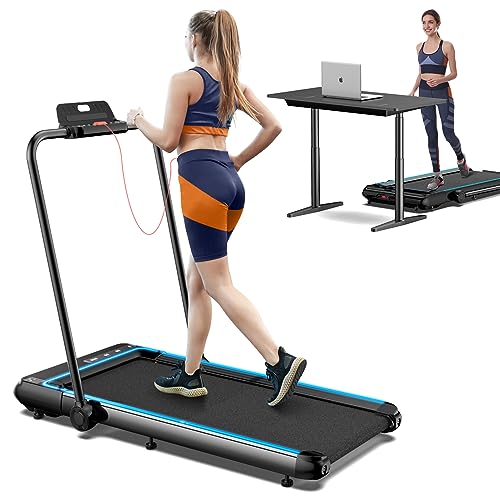5 Walking Machine Projects For Any Budget
페이지 정보
작성자 Annette 댓글 0건 조회 8회 작성일 25-09-06 10:49본문
The Walking Machine: A Comprehensive Guide to Your Fitness Companion
In today's fast-paced world, where time is a high-end, maintaining a constant workout routine can be an obstacle. For lots of, a walking machine-- commonly referred to as a treadmill-- works as a perfect physical fitness companion. This short article offers an extensive look at walking machines, including their advantages, types, maintenance pointers, and often asked concerns.

Why Choose a Walking Machine?
Walking machines provide a practical and efficient way to incorporate cardiovascular workout into every day life. Here are a number of key benefits:
- Convenience: Walking machines allow individuals to work out anytime, no matter weather conditions or time restraints. They are best for busy schedules.
- Versatility: Users can stroll, jog, or run at their own speed and strength.
- Safety: Walking machines present a lower threat of injury compared to outside walking or running, specifically for newbies or those recuperating from injuries.
- Tracking Progress: Many treadmills included integrated screens that track metrics like speed, distance, and calories burned.
Types of Walking Machines
When considering a walking machine, it's vital to pick the ideal type based upon private physical fitness objectives and area restrictions. Below are the primary types of walking machines:
| Type | Description |
|---|---|
| Handbook Treadmills | These machines do not have a motor, and users need to stroll or go to rotate the belt. |
| Electric Treadmills | Powered by an electric motor, allowing users to set the speed and incline easily. |
| Folding Treadmills | Developed for easy storage, these treadmills can be folded up when not in use. |
| Desk Treadmills | Ideal for a dual work and workout environment, these compact machines enable walking while working. |
| Slope Trainers | These enable users to simulate uphill walking, enhancing exercise strength and calorie burn. |
Selecting the Right Walking Machine
Picking the best walking machine can substantially impact inspiration and effectiveness. Here are some aspects to think about:
Key Features to Look For
- Motor Power: An effective motor makes sure a smooth and constant exercise. For occasional walkers, a 1.5 HP motor is normally sufficient; for much heavier use, try to find 3.0 HP and above.
- Belt Size: A wider and longer belt supplies more space saving treadmill for a comfy stride. Requirement sizes range from 16 inches broad and 50 inches long.
- Slope Options: Adjustable slope settings can replicate walking or running uphill, increasing the intensity of the workout.
- Shock Absorption: Good shock absorption minimizes the danger of joint injuries and enhances convenience.
- Console Features: Look for built-in workouts, heart rate monitors, and connectivity features like Bluetooth for a more engaging experience.
Budget plan Considerations
Walking machines come in a wide variety of costs, depending upon functions and construction quality. Here's a rough budget plan breakdown:
| Price Range | Features |
|---|---|
| Under ₤ 300 | Fundamental handbook or little electric treadmills with limited functions. |
| ₤ 300 - ₤ 700 | Advanced electric home treadmills uk with slope, medium power motors, and much better warranties. |
| ₤ 700 - ₤ 1500 | High-quality electric treadmills with larger integrated screens, substantial features, and warranties. |
| ₤ 1500 and above | High-end models providing innovative technology, functions, and durable building for severe fitness enthusiasts. |
Maintenance Tips for Your Walking Machine
To guarantee longevity and optimum efficiency of a walking machine, consider the following maintenance pointers:
- Regular Cleaning: Dust and sweat can accumulate on the machine and the belt. Clean down the surface areas and tidy the belt frequently.
- Lubrication: Depending sale on treadmills the model, oiling the running belt periodically can prevent wear and tear. Inspect the producer guidelines for recommended lubrication schedules.
- Examination: Periodically inspect the machine for loose screws or worn parts. Tighten and replace as required.
- Calibration: Occasionally, examine the calibration of your machine's metrics to ensure they offer accurate data.
- Proper Use: Follow the manufacturer's recommendations for weight limitations and operational guidelines.
FAQs About Walking Machines
1. Are walking machines a good exercise?
Yes, walking machines supply an excellent cardiovascular workout, can assist with weight-loss, and improve general health.
2. How often should I utilize a walking machine?
Aim for at least 150 minutes of moderate-intensity aerobic activity weekly, which can quickly be accomplished with routine sessions on a walking machine.
3. Can I reduce weight on a walking machine?
Yes, integrating a walking machine regimen into a healthy diet can promote weight-loss, particularly if combined with intervals and incline training.
4. Is it safe for elders to utilize a walking machine?
Yes, walking machines can be safe for seniors with low-impact settings and security functions like hand rails. Nevertheless, people should consult with their healthcare provider before beginning any workout program.

5. What's the difference between a treadmill and a walking machine?
The term "walking machine" usually refers to a treadmill for home use intended for walking, while "treadmill" can refer to machines utilized for numerous strengths, including running.
With their adaptability and benefit, walking machines can considerably improve one's fitness journey. By carefully choosing the ideal type, ensuring proper maintenance, and including various workout strategies, users can optimize their walking machine's benefits. As with any exercise program, consistency is key to accomplishing lasting fitness outcomes.
댓글목록
등록된 댓글이 없습니다.

